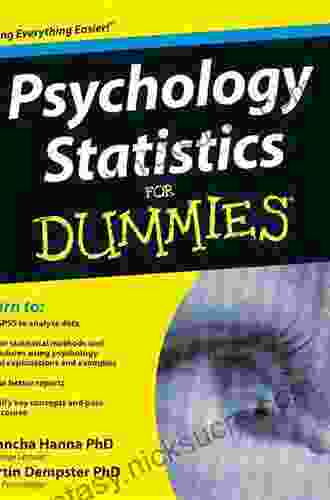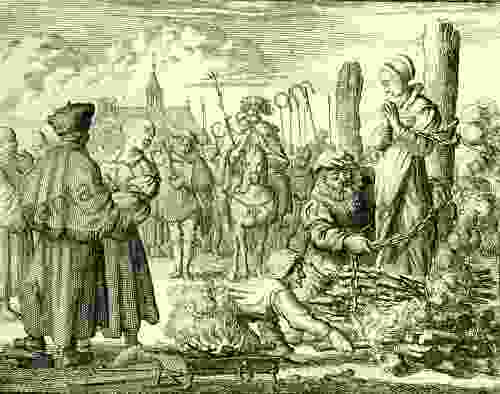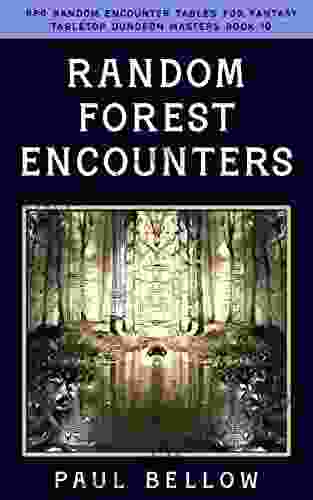Unveiling the Dark History of the Inquisition in the Middle Ages: A Comprehensive Exploration of 1887

In the annals of human history, the Inquisition stands as a haunting reminder of the dark and perilous paths that religious fervor and unchecked power can tread. During the Middle Ages, the Inquisition emerged as a formidable force, wielding its authority to suppress dissent, persecute heretics, and instill fear into the hearts of the populace. This article aims to provide a comprehensive exploration of the Inquisition in 1887, a pivotal year that marked a significant turning point in the institution's history.
4 out of 5
| Language | : | English |
| File size | : | 5131 KB |
| Text-to-Speech | : | Enabled |
| Enhanced typesetting | : | Enabled |
| Print length | : | 606 pages |
| Lending | : | Enabled |
| Screen Reader | : | Supported |
The Origins and Evolution of the Inquisition
The roots of the Inquisition can be traced back to the 11th century, when the Catholic Church sought to combat the spread of heresy, particularly in southern France. Pope Gregory IX established the first formal Inquisition in 1231, granting inquisitors sweeping powers to investigate and punish those suspected of deviating from orthodox beliefs. Over time, the Inquisition evolved into a complex and feared institution, with tribunals established throughout Europe.
In 1887, the Inquisition was firmly entrenched in its role as the guardian of Catholic orthodoxy. The year witnessed a renewed surge in its activity, particularly in Spain, where the Catholic Church held a dominant position. The Spanish Inquisition, known for its ruthless methods and unwavering zeal, had been established in 1478 and had become a formidable force in suppressing religious dissent.
Methods of the Inquisition
The Inquisition employed a range of methods to achieve its objectives. These methods, often characterized by brutality and a disregard for human rights, included:
- Denunciation: Individuals could be accused of heresy by anyone, including neighbors, family members, or even personal enemies.
- Secret Investigations: Inquisitors conducted secret investigations, gathering evidence against the accused without their knowledge.
- Arrest and Imprisonment: Suspected heretics were arrested and held in prison, often for extended periods, under harsh conditions.
- Torture: Torture was widely used to extract confessions and information from the accused. The methods of torture were varied and often gruesome.
- Public Trials: Trials were held in public, often in large squares or churches, to serve as a spectacle and instill fear in the population.
- Sentencing: Sentences ranged from penances and fines to imprisonment and execution. Those found guilty of heresy were often burned at the stake.
Targets of the Inquisition
The Inquisition primarily targeted those suspected of heresy, a broad term that encompassed a wide range of offenses against Catholic doctrine. Heretics could include those who denied the divinity of Christ, questioned the authority of the Church, or practiced non-Christian religions. However, the Inquisition also targeted other groups, including:
- Witches: During the 15th and 16th centuries, a widespread belief in witchcraft gripped Europe, and many women were accused of practicing black magic.
- Conversos: Conversos were Jews or Muslims who had converted to Christianity but were suspected of secretly adhering to their former faiths.
- Illuminists: The Illuminati, a semi-secret society founded in the 18th century, was accused of promoting atheism and revolutionary ideas.
The Spanish Inquisition in 1887
In 1887, the Spanish Inquisition was at the height of its power. King Philip II, a devout Catholic, had ascended to the throne in 1556 and had vowed to eradicate heresy from Spain. Under his rule, the Inquisition intensified its activities, targeting not only Protestants but also Conversos and other suspected heretics.
One of the most notorious cases of the Spanish Inquisition in 1887 was that of Francisco Carranza, the Archbishop of Toledo. Carranza was accused of heresy after his writings were found to contain passages that were critical of the Church. After a long and highly publicized trial, he was found guilty and died in prison in 1576.
Decline and Abolition of the Inquisition
The power of the Inquisition began to wane in the 18th century. The Enlightenment, with its emphasis on reason and individual liberty, challenged the authority of the Church and the legitimacy of religious persecution. In addition, the rise of secular governments and the weakening of papal authority gradually eroded the Inquisition's influence.
In 1834, the Spanish Inquisition was finally abolished. Other European countries had already taken similar measures, and by the end of the 19th century, the Inquisition had ceased to exist as a major force in European society.
Legacy of the Inquisition
The legacy of the Inquisition is a complex and controversial one. On the one hand, it reflects the darker aspects of human nature, the capacity for cruelty, intolerance, and the abuse of power. The methods employed by the Inquisition, particularly the use of torture, have cast a long shadow over the history of Western civilization.
On the other hand, the Inquisition also played a role in shaping the development of modern Europe. It helped to centralize the power of the Catholic Church and contributed to the religious wars that ravaged the continent during the 16th and 17th centuries. The Inquisition's relentless pursuit of heretics also contributed to the rise of skepticism and the questioning of traditional authority, which would ultimately lead to the scientific revolution and the Enlightenment.
The history of the Inquisition in the Middle Ages, particularly in 1887, is a sobering reminder of the dangers of religious intolerance and the devastating consequences of unchecked power. The methods employed by the Inquisition, the suffering inflicted upon its victims, and the profound impact it had on European society serve as a cautionary tale for all generations.
By understanding the dark history of the Inquisition, we can better appreciate the importance of religious freedom, human rights, and the rule of law. It is only through education and dialogue that we can hope to prevent the recurrence of such horrors in the future.
4 out of 5
| Language | : | English |
| File size | : | 5131 KB |
| Text-to-Speech | : | Enabled |
| Enhanced typesetting | : | Enabled |
| Print length | : | 606 pages |
| Lending | : | Enabled |
| Screen Reader | : | Supported |
Do you want to contribute by writing guest posts on this blog?
Please contact us and send us a resume of previous articles that you have written.
 Fiction
Fiction Non Fiction
Non Fiction Romance
Romance Mystery
Mystery Thriller
Thriller SciFi
SciFi Fantasy
Fantasy Horror
Horror Biography
Biography Selfhelp
Selfhelp Business
Business History
History Classics
Classics Poetry
Poetry Childrens
Childrens Young Adult
Young Adult Educational
Educational Cooking
Cooking Travel
Travel Lifestyle
Lifestyle Spirituality
Spirituality Health
Health Fitness
Fitness Technology
Technology Science
Science Arts
Arts Crafts
Crafts DIY
DIY Gardening
Gardening Petcare
Petcare Evan Purcell
Evan Purcell Izzy Judd
Izzy Judd Robert Byron
Robert Byron Bill Bennett
Bill Bennett Matt Parker
Matt Parker Yau Ming Ng Thompson
Yau Ming Ng Thompson Carson Sievert
Carson Sievert Kent Hrbek
Kent Hrbek Shawn Levy
Shawn Levy Carlos Torres
Carlos Torres Manly P Hall
Manly P Hall Mosby
Mosby Ginger Sinsabaugh
Ginger Sinsabaugh John Mccannon
John Mccannon Sharmila Desai
Sharmila Desai Richard Holmes
Richard Holmes Mike Gibson
Mike Gibson David E Stuart
David E Stuart John Muir Laws
John Muir Laws Jamie Aten
Jamie Aten Jane Nelsen
Jane Nelsen Hayley Mitchell Haugen
Hayley Mitchell Haugen Paul Brummell
Paul Brummell Tom Dodd
Tom Dodd Max Help Workbooks
Max Help Workbooks Herschel Knapp
Herschel Knapp Jessica Denay
Jessica Denay Chris Sajnog
Chris Sajnog Dan Murphy
Dan Murphy Cj Andersen
Cj Andersen Diondre Mompoint
Diondre Mompoint General
General Rocky Mcelveen
Rocky Mcelveen Sue L Hamilton
Sue L Hamilton Steve Schwartz
Steve Schwartz Stanislas Dehaene
Stanislas Dehaene Ryan Johnston
Ryan Johnston Rabbi Jason Sobel
Rabbi Jason Sobel Leah Day
Leah Day Isabel Fonseca
Isabel Fonseca Jessica Wiebe
Jessica Wiebe Kindle Edition
Kindle Edition Dashka Slater
Dashka Slater Claire Russell
Claire Russell J Robert King
J Robert King Joshua Becker
Joshua Becker Sue Enquist
Sue Enquist Kenny Dill
Kenny Dill Katie Singer
Katie Singer Steve Biddulph
Steve Biddulph Michael Volkmar
Michael Volkmar Vernon G Zunker
Vernon G Zunker George Mahood
George Mahood Jane Bottomley
Jane Bottomley Carlos Castaneda
Carlos Castaneda Sophia Freeman
Sophia Freeman Vanessa Lapointe
Vanessa Lapointe Kristopher Martel
Kristopher Martel Bob Duff
Bob Duff Terry Pratchett
Terry Pratchett Bill Gladstone
Bill Gladstone Janice Selekman
Janice Selekman Tina Cassidy
Tina Cassidy Diana Wynne Jones
Diana Wynne Jones Chris Napier
Chris Napier Sanford Holst
Sanford Holst Wendy Hinman
Wendy Hinman Ken Venturi
Ken Venturi Joan Roughgarden
Joan Roughgarden Dina Nayeri
Dina Nayeri Bryan Mann
Bryan Mann Rachna Chhachhi
Rachna Chhachhi Marie Max House
Marie Max House Jacques Steinberg
Jacques Steinberg Robert Greene
Robert Greene Jarrett Dapier
Jarrett Dapier Sheila Mackechnie Murtha
Sheila Mackechnie Murtha Matthew Bowling
Matthew Bowling Pedro Urvi
Pedro Urvi Bill Karwin
Bill Karwin Jacqueline B Persons
Jacqueline B Persons Craig Chappelow
Craig Chappelow Peter Julius Sloan
Peter Julius Sloan Sarah Zettel
Sarah Zettel Callum Roberts
Callum Roberts Bev Pettersen
Bev Pettersen Justin Lichter
Justin Lichter Richard W Fisher
Richard W Fisher Jackie Bolen
Jackie Bolen Sandi Mann
Sandi Mann Zavonda Vinson Parrish
Zavonda Vinson Parrish Meagan Trayler
Meagan Trayler David E Johnson
David E Johnson Hugh Neill
Hugh Neill Pete Spencer
Pete Spencer Sam Harris
Sam Harris Carl B Tolman
Carl B Tolman Mary Griffith
Mary Griffith Tim Weston
Tim Weston Betsy Herman
Betsy Herman Mindy Mcginnis
Mindy Mcginnis Joy Hakim
Joy Hakim Paul Francis
Paul Francis Enzo Tonti
Enzo Tonti Jeff Wheeler
Jeff Wheeler Elizabeth King
Elizabeth King Ezekiel Eversand
Ezekiel Eversand Jamie Dumas
Jamie Dumas Dr Nancy L Nolan
Dr Nancy L Nolan Greg Witt
Greg Witt Brandon Sanderson
Brandon Sanderson Thomas Cleary
Thomas Cleary Susan M Orsillo
Susan M Orsillo Kiera Cass
Kiera Cass Martyn Denscombe
Martyn Denscombe Yakima Canutt
Yakima Canutt Jennifer Shannon
Jennifer Shannon Geraldine Van Bueren
Geraldine Van Bueren Brian Crist
Brian Crist David Halberstam
David Halberstam Blake Sebring
Blake Sebring Bill Moeller
Bill Moeller Nrup Parikh
Nrup Parikh Robert Bruce Thompson
Robert Bruce Thompson Mark Lehner
Mark Lehner J Douglas Faires
J Douglas Faires Stephan A Hoeller
Stephan A Hoeller Anya Kamenetz
Anya Kamenetz Louis Sachar
Louis Sachar Jon Loeliger
Jon Loeliger Ingrid Chalufour
Ingrid Chalufour R E Skibiski
R E Skibiski Alan Lawrence Sitomer
Alan Lawrence Sitomer Zoe Hana Mikuta
Zoe Hana Mikuta Jeremy Paxman
Jeremy Paxman Bill Schneider
Bill Schneider Emma Cannon
Emma Cannon Holly Donahue Singh
Holly Donahue Singh Victoria Johnson
Victoria Johnson Dr Julissa Hernandez Nd Cnhp
Dr Julissa Hernandez Nd Cnhp Linda D Dahl
Linda D Dahl Ta Nehisi Coates
Ta Nehisi Coates John Mccollister
John Mccollister Susan Shelby Torrance
Susan Shelby Torrance Deborah J Rumsey
Deborah J Rumsey Olivia Gordon
Olivia Gordon Sharon Bergen
Sharon Bergen Herbert Dorsey
Herbert Dorsey Richard Post
Richard Post Joe Byers
Joe Byers Michael Matthews
Michael Matthews Gary Kamiya
Gary Kamiya Russ Harris
Russ Harris Gianna Sobol
Gianna Sobol Brienne Murk
Brienne Murk Shantel Silbernagel
Shantel Silbernagel Felicity Aston
Felicity Aston Michael Lempert
Michael Lempert Andrea Cremer
Andrea Cremer Mike Veny
Mike Veny Carolyn Schulz
Carolyn Schulz Mark Solms
Mark Solms Douglas W Ota
Douglas W Ota Sara Dyer
Sara Dyer Hilary Nangle
Hilary Nangle Ramona Finn
Ramona Finn Paul Levy
Paul Levy Jennifer Kolari
Jennifer Kolari Dylan Tomine
Dylan Tomine Conway X Bowman
Conway X Bowman Vukota Boljanovic
Vukota Boljanovic Jakub Marian
Jakub Marian Charlie Craven
Charlie Craven Davi Kopenawa
Davi Kopenawa Henry Nicholls
Henry Nicholls J T Williams
J T Williams Mark Young
Mark Young James Alexander Currie
James Alexander Currie David Nirenberg
David Nirenberg Rod Powers
Rod Powers Erin Mckittrick
Erin Mckittrick Matt Doeden
Matt Doeden Charlotte E English
Charlotte E English Bill Gutman
Bill Gutman Marty Gitlin
Marty Gitlin Freddie Fernandez
Freddie Fernandez Bill Boyum
Bill Boyum Steven Hassan
Steven Hassan Joshua Foer
Joshua Foer Rough Guides
Rough Guides James W Finegan
James W Finegan Karen Palacios Jansen
Karen Palacios Jansen Leland Chant
Leland Chant Charles Simpson
Charles Simpson Scott Wilson
Scott Wilson Styrling Strother
Styrling Strother Editors Of Sports Illustrated
Editors Of Sports Illustrated James R Payne
James R Payne Bill Nowlin
Bill Nowlin Yossi Ghinsberg
Yossi Ghinsberg Dave Pine
Dave Pine Helen Clarke
Helen Clarke Erin Beaty
Erin Beaty Bob Duchesne
Bob Duchesne Karen Armstrong
Karen Armstrong Pat Drake
Pat Drake Genius Reads
Genius Reads Morgan Oostra
Morgan Oostra Farah Heron
Farah Heron Chris Ferrie
Chris Ferrie Bode Miller
Bode Miller Bill Streever
Bill Streever David Benjamin
David Benjamin Kevin C Kelleher Md Md
Kevin C Kelleher Md Md Sandra Davidson
Sandra Davidson Dinah Bucholz
Dinah Bucholz Sang H Kim
Sang H KimMax Youngquist
 H P Lovecraft
H P Lovecraft C D Holmes Miller
C D Holmes Miller Frank S Ring
Frank S Ring Tom Humphrey
Tom Humphrey Eric H Cline
Eric H Cline Kasun Indrasiri
Kasun Indrasiri Marcus Brotherton
Marcus Brotherton Shelby Mahurin
Shelby Mahurin Robert Axelrod
Robert Axelrod Stephanie Manley
Stephanie Manley Ellen Schuthof Lesmeister
Ellen Schuthof Lesmeister Gary Player
Gary Player Curt Sampson
Curt Sampson Tiffany Loggins Psyd
Tiffany Loggins Psyd Charles Goodwill
Charles Goodwill Bryan Irwin
Bryan Irwin Megan Mcgrory Massaro
Megan Mcgrory Massaro Paul Halpern
Paul Halpern John H Holland
John H Holland Karyn D Hall
Karyn D Hall Clifford A Pickover
Clifford A Pickover Ross Bonander
Ross Bonander Silvia Dunn
Silvia Dunn Melissa Abramovitz
Melissa Abramovitz Paris Williams
Paris Williams Peter Jackson
Peter Jackson Kevin Marx
Kevin Marx Valeria Ray
Valeria Ray Claudia Mazzucco
Claudia Mazzucco Simon Buxton
Simon Buxton Donncha Hanna
Donncha Hanna Max Lugavere
Max Lugavere Henry Charles Lea
Henry Charles Lea Beck Weathers
Beck Weathers Lynette Rushton
Lynette Rushton William F Keegan
William F Keegan Phoebe Bailey
Phoebe Bailey Pat Cohen
Pat Cohen Laurence Price
Laurence Price Martin Davies
Martin Davies Stephen L Morgan
Stephen L Morgan Jitendra Chouksey
Jitendra Chouksey Jon M Sweeney
Jon M Sweeney David Joyce
David Joyce Editors Of Garden And Gun
Editors Of Garden And Gun Gail Fay
Gail Fay Thomas Bailey
Thomas Bailey Patrick Mcginty
Patrick Mcginty Simon Pridmore
Simon Pridmore Special Tactics
Special Tactics Kate Darling
Kate Darling Mercedes Lackey
Mercedes Lackey Rachael Scdoris
Rachael Scdoris Tiffany Bergin
Tiffany Bergin Maggi Savin Baden
Maggi Savin Baden Bill Patton
Bill Patton Jedd K Parkinson
Jedd K Parkinson Helen Irlen
Helen Irlen Dan Hamilton
Dan Hamilton Rupert Spira
Rupert Spira John Kettle
John Kettle The Uk Mathematics Trust
The Uk Mathematics Trust Kat Kruger
Kat Kruger Jared Derksen
Jared Derksen Zach Schonbrun
Zach Schonbrun Dan Blanchard
Dan Blanchard Jim Greenwood
Jim Greenwood Ron Elbe
Ron Elbe Fiona Danks
Fiona Danks James Patterson
James Patterson Phil Genova
Phil Genova Frederica Relly
Frederica Relly Gavin Weightman
Gavin Weightman Jackie Brown
Jackie Brown P J E Peebles
P J E Peebles D C Haenlien
D C Haenlien Richard B Pelzer
Richard B Pelzer Fred H Croom
Fred H Croom Michael J Tougias
Michael J Tougias Bill Hammack
Bill Hammack Virginia Smith Harvey
Virginia Smith Harvey Mark Booth
Mark Booth Jacques Devore
Jacques Devore Aylette Jenness
Aylette Jenness Joie Jager Hyman
Joie Jager Hyman Henry M Cowles
Henry M Cowles Kevin Sverduk
Kevin Sverduk Luciano Floridi
Luciano Floridi Steven M Levy
Steven M Levy Jen Castleberry
Jen Castleberry Robert P Beebe
Robert P Beebe Jonathan Crichton
Jonathan Crichton John Brierley
John Brierley Chris Fischer
Chris Fischer Harlan Coben
Harlan Coben Colleen Graves
Colleen Graves Dick Edie
Dick Edie Dan Yaccarino
Dan Yaccarino T Whitmore
T Whitmore Edwin H Friedman
Edwin H Friedman Stacie Mahoe
Stacie Mahoe Billy Griffiths
Billy Griffiths Sara Low
Sara Low Issai Chozanshi
Issai ChozanshiR E S
 Sandra Berenbaum
Sandra Berenbaum Joseph Campbell
Joseph Campbell George C Thomas
George C Thomas Stephen Arterburn
Stephen Arterburn Marc Bona
Marc Bona John C Norcross
John C Norcross Daniele Benedettelli
Daniele Benedettelli Adiba Jaigirdar
Adiba Jaigirdar Kasey Edwards
Kasey Edwards Dawn Huebner
Dawn Huebner Laurie Rubin
Laurie Rubin Christopher Banecks
Christopher Banecks Heather Long
Heather Long Frank Giampaolo
Frank Giampaolo Jessica Taylor
Jessica Taylor Megan Don
Megan Don Zane Grey
Zane Grey Ofer Gal
Ofer Gal Elizabeth Thompson
Elizabeth Thompson Ted Kaczynski
Ted Kaczynski Neil D Jespersen
Neil D Jespersen Jojo Siwa
Jojo Siwa Gary Dean Quesenberry
Gary Dean Quesenberry Brad States
Brad States Deborah Blum
Deborah Blum Robert A Pelcovits
Robert A Pelcovits Elizabeth Winthrop
Elizabeth Winthrop Fodor S Travel Guides
Fodor S Travel Guides Manoj Sharma
Manoj Sharma Margo Armstrong
Margo Armstrong Joseph Edminister
Joseph Edminister Christian Smith
Christian Smith Richard Rohr
Richard Rohr S W Wilcox
S W Wilcox Jeffrey Lindsey
Jeffrey Lindsey Bill Miller
Bill Miller Elsevier
Elsevier Rob Steger
Rob Steger Jake Jacobson
Jake Jacobson Michael D Alessio
Michael D Alessio Charles A Rhodus
Charles A Rhodus Tara Bianca
Tara Bianca Bex Gunn
Bex Gunn Daniel J Velleman
Daniel J Velleman Melissa Layne
Melissa Layne Lucas Bessire
Lucas Bessire Dan Garner
Dan Garner Thad Beery
Thad Beery Tony Ortega
Tony Ortega Holly Jackson
Holly Jackson Doug Scott
Doug Scott Krista Tippett
Krista Tippett Bob Glover
Bob Glover James Dashner
James Dashner Curvebreakers
Curvebreakers Doug Fletcher
Doug Fletcher Kristin N Spencer
Kristin N Spencer Dawn Hadley
Dawn Hadley Holger Schutkowski
Holger Schutkowski Colin Thubron
Colin Thubron Michael W Eysenck
Michael W Eysenck Michael Tlanusta Garrett
Michael Tlanusta Garrett Zecharia Sitchin
Zecharia Sitchin Ian Tuhovsky
Ian Tuhovsky Mike Westerfield
Mike Westerfield Gregg Jackson
Gregg Jackson Sabaa Tahir
Sabaa Tahir Wanza Leftwich
Wanza Leftwich Zigzag English
Zigzag English Jelena Bogdanovic
Jelena Bogdanovic David Price
David Price Shannon Sovndal
Shannon Sovndal Marion Zimmer Bradley
Marion Zimmer Bradley Michael J Epstein
Michael J Epstein Dean Keith Simonton
Dean Keith Simonton Michael Sullivan
Michael Sullivan Gwendoline Smith
Gwendoline Smith Marisa Imon
Marisa Imon Kate Marchant
Kate Marchant J D Gauchat
J D Gauchat Oscar Nilson
Oscar Nilson Lee Gutkind
Lee Gutkind Rick Steves
Rick Steves Erin Mcrae
Erin Mcrae Ernest Raymond
Ernest Raymond Charles Duhigg
Charles Duhigg Marilee Lebon
Marilee Lebon Michael Hartman
Michael Hartman Paul Bellow
Paul Bellow Emma Griffin
Emma Griffin Joann Cianciulli
Joann Cianciulli Mark Vanhoenacker
Mark Vanhoenacker Bjorn Kiggen
Bjorn Kiggen Al Walsh
Al Walsh Sheridan Anderson
Sheridan Anderson Bharath Ramsundar
Bharath Ramsundar Marie Viljoen
Marie Viljoen Rachel Burgess
Rachel Burgess Tony Guerra
Tony Guerra Larry Baush
Larry Baush Linda Bauer
Linda Bauer T Edward Nickens
T Edward Nickens Peter Aitken
Peter Aitken Ross Edgley
Ross Edgley Cherie Dimaline
Cherie Dimaline Nicole R Taylor
Nicole R Taylor Suzannah Rowntree
Suzannah Rowntree Ian Wilson
Ian Wilson Clement Salvadori
Clement Salvadori G William Barnard
G William Barnard Cheryl Marlene
Cheryl Marlene Blaine Bartel
Blaine Bartel Robert F Burgess
Robert F Burgess Elliot Kay
Elliot Kay Billy Martin
Billy Martin Nancy Romita
Nancy Romita Marsha Vanwynsberghe
Marsha Vanwynsberghe Laura Nowlin
Laura Nowlin Gary Nicol
Gary Nicol James P Allen
James P Allen Elizabeth A Stanley
Elizabeth A Stanley Lisa Dorfman
Lisa Dorfman Wendy Doniger
Wendy Doniger Irene Mceachen
Irene Mceachen Chris Sims
Chris Sims Eric A Weiss Md
Eric A Weiss Md Scarlett Curtis
Scarlett Curtis Supersummary
Supersummary Phil Robertson
Phil Robertson Rebekah Nathan
Rebekah Nathan Rick Reilly
Rick Reilly Rob Casey
Rob Casey Paula Yoo
Paula Yoo Jamie Foxx
Jamie Foxx Simon Baron Cohen
Simon Baron Cohen
Light bulbAdvertise smarter! Our strategic ad space ensures maximum exposure. Reserve your spot today!

 Salman RushdiePsychology Statistics For Dummies Donncha Hanna: Unveiling the Statistical...
Salman RushdiePsychology Statistics For Dummies Donncha Hanna: Unveiling the Statistical...
 Stuart BlairHow To Get Your Kids To Behave Without Messing Them Up: A Comprehensive Guide...
Stuart BlairHow To Get Your Kids To Behave Without Messing Them Up: A Comprehensive Guide... Fernando BellFollow ·14.9k
Fernando BellFollow ·14.9k Jamal BlairFollow ·16.4k
Jamal BlairFollow ·16.4k Gerald BellFollow ·15.1k
Gerald BellFollow ·15.1k Andy ColeFollow ·15.6k
Andy ColeFollow ·15.6k Langston HughesFollow ·19.9k
Langston HughesFollow ·19.9k Kevin TurnerFollow ·11.4k
Kevin TurnerFollow ·11.4k T.S. EliotFollow ·4.8k
T.S. EliotFollow ·4.8k Thomas HardyFollow ·9.3k
Thomas HardyFollow ·9.3k

 Sammy Powell
Sammy PowellBalancing Your Hormones Naturally: Regaining Fertility...
Hormones play a vital role in our...

 Kendall Ward
Kendall WardThe Other Baby Book: A Comprehensive Guide to Baby's...
The Other Baby...

 Kenneth Parker
Kenneth ParkerA Comprehensive Guide to Yoga Sadhana for Mothers:...
Motherhood is a...

 Neil Parker
Neil ParkerInside the Secret Space Programs
An Exposé...
4 out of 5
| Language | : | English |
| File size | : | 5131 KB |
| Text-to-Speech | : | Enabled |
| Enhanced typesetting | : | Enabled |
| Print length | : | 606 pages |
| Lending | : | Enabled |
| Screen Reader | : | Supported |












